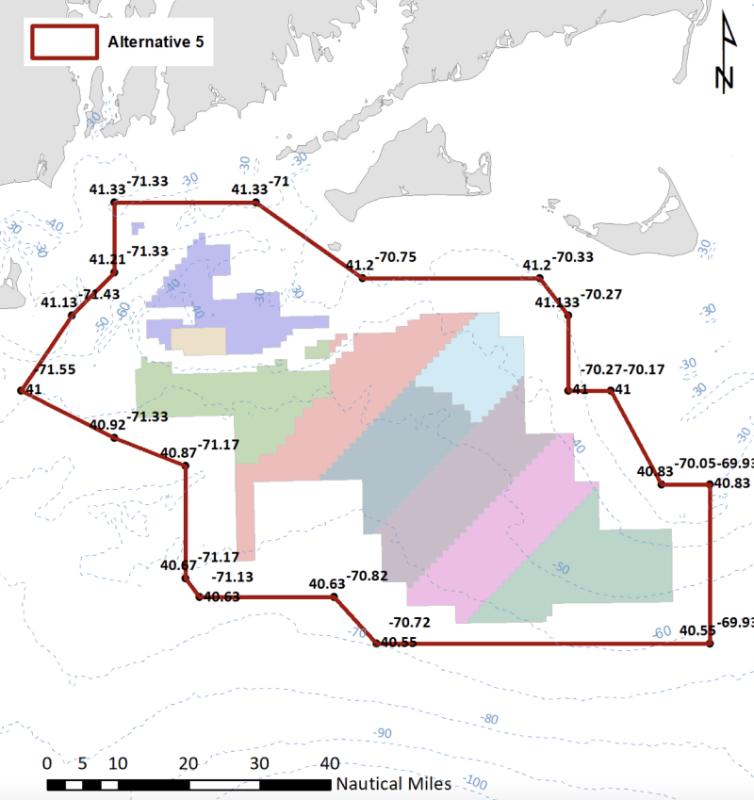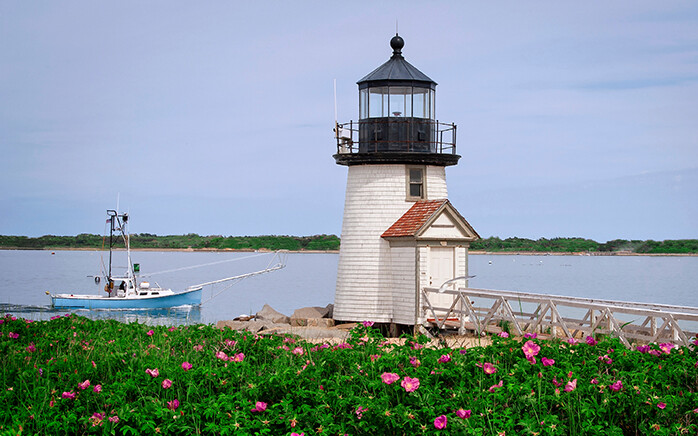A swath of ocean off southern New England between Nantucket and Block Island – including tens of thousands of acres marked for offshore wind energy development – will be designated a ‘habitat area of particular concern’ by National Oceanic and Atmospheric Administration.
NOAA Fisheries will finalize the action March 6, implementing a proposal by the New England Fishery Management Council over its concerns of how wind development will affect essential fish habitat, including Cox Ledge, an important bottom area for cod spawning.

The designation itself does not impose new conditions on the federal Bureau of Ocean Energy Management and wind developer plans for energy projects. The HAPC brings additional conservation focus when NOAA Fisheries reviews and comments on federal and/or state actions that could impact essential fish habitat – such as BOEM’s reviews of offshore wind energy construction and operations plans.
“EFH consultations provide non-binding conservation recommendations to the implementing (action) agency to avoid, minimize, and mitigate the impacts of federal actions on EFH,” according to the NOAA Fisheries Feb. 2 notice in the Federal Register.
BOEM, NOAA Fisheries and fishermen have long debated how to protect cod habitat in the region if turbine arrays are built, with NOAA experts specifically pointing to likely impacts around Cox Ledge.
The often-bitter debate was one factor in the Sept. 1 mass resignation of the Rhode Island Fishermen’s Advisory Board, whose members charged the state Coastal Resource Management Council is too deferential to wind development interests at the expense of habitat and fisheries impacts.
The HAPC outline is drawn around wind energy development areas, and outward 10 kilometers (5.4 nautical miles), recognizing that impacts from turbine construction – such as underwater noise from pile driving – can extend far beyond wind project leases, according to NOAA Fisheries supporting documents.
The area includes “important cod spawning grounds and areas of complex habitat that are known to serve important habitat functions to federally managed species within and adjacent to offshore wind development areas,” according to NOAA Fisheries. “Complex benthic habitat provides shelter for certain species during their early life history, refuge from predators, and feeding opportunities.”
Species using the habitat area include “Atlantic cod egg, larvae, juveniles, and adults; Atlantic herring eggs; Atlantic sea scallop eggs, juveniles, and adults; little skate juveniles and adults; monkfish juveniles and adults; ocean pout eggs, juveniles, and adults; red hake juveniles and adults; winter flounder eggs, juveniles, and adults; and winter skate juveniles and adults,” according to the final rule statement.
But the effect of development on cod is the primary focus of the HAPC rule. The southern New England waters and sea floor are important for Georges Bank cod stock now in poor condition, “and Southern New England cod represents a genetically distinct subpopulation,” according to the rule statement. “The subpopulation also contributes to the Georges Bank cod stock; thus, any impacts to Southern New England cod could also detrimentally impact the Georges Bank stock.”







